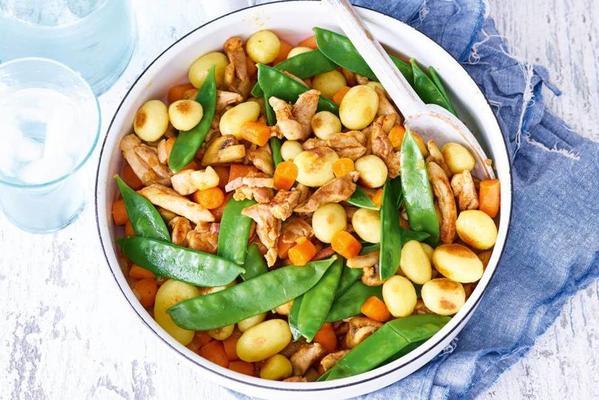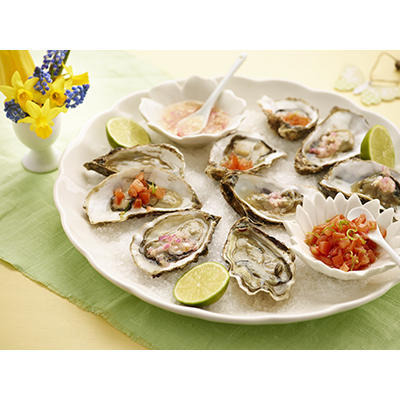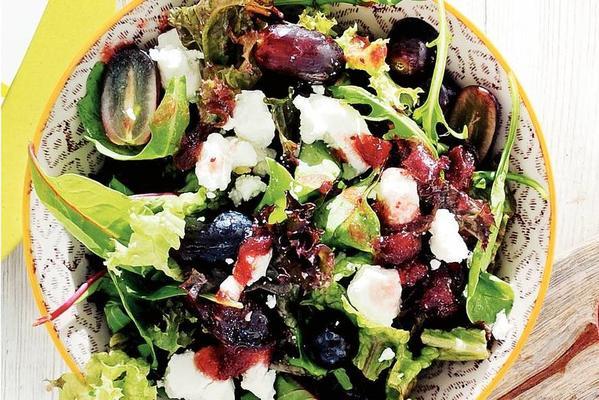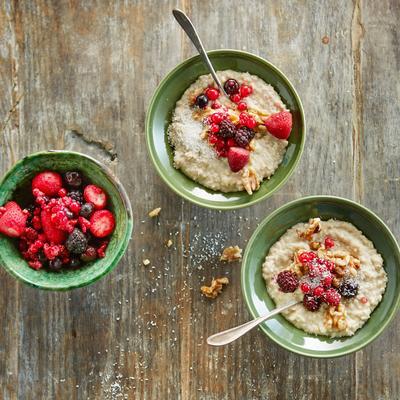Is Cheese Healthy Or Not?
-
If there is one thing that the average Dutch person really likes to eat for breakfast, it is cheese. And preferably traditional Dutch cheese! But there are very big differences between cheese and cheese. This of course goes together with the price:
-
In the supermarket you can buy cheese for 5 euros per kilo, and 'the same' cheese can be bought at the specialist shop for 13 euros per kilo.
-
Where this difference comes from is clear: Difference in quality. But where do these quality differences come from? In the first part you will learn all about cheese, then we will go into more detail about the facts that cause quality differences. Finally, we will look at the debate on whether cheese is healthy or not.
-
 11 minMain dishpeanut oil, tofu stir-fry cubes finely seasoned, stir fry sauce sweet and sour, thick noodles, carrot julienne, beetroot julienne, yellow bell pepper, watercress,rainbow salad with tofu
11 minMain dishpeanut oil, tofu stir-fry cubes finely seasoned, stir fry sauce sweet and sour, thick noodles, carrot julienne, beetroot julienne, yellow bell pepper, watercress,rainbow salad with tofu -
 45 minMain dishRed cabbage, mild olive oil, quinoa plus, forest outing, lemon, sesame oil, soy sauce less salt, Bio Today tahini white in pot, tap water,grilled red cabbage with quinoa salad
45 minMain dishRed cabbage, mild olive oil, quinoa plus, forest outing, lemon, sesame oil, soy sauce less salt, Bio Today tahini white in pot, tap water,grilled red cabbage with quinoa salad -
 30 minDessertBrie, Roquefort, port salut, gruyere, Camembert, walnut, garlic, thyme, honey, grape, baguette, Red onion, red grape, raisins, Red wine, Red wine vinegar, Brown sugar,generous cheese plate with onion marmalade
30 minDessertBrie, Roquefort, port salut, gruyere, Camembert, walnut, garlic, thyme, honey, grape, baguette, Red onion, red grape, raisins, Red wine, Red wine vinegar, Brown sugar,generous cheese plate with onion marmalade -
 30 minDessertFull Milk, whipped cream, macaroon, custard powder, vanilla sugar, sugar, protein, amaretto, almond liqueur, basic recipe cooking pears,macaroon pastry with casserole
30 minDessertFull Milk, whipped cream, macaroon, custard powder, vanilla sugar, sugar, protein, amaretto, almond liqueur, basic recipe cooking pears,macaroon pastry with casserole
-
Content article: 1. History of cheese 2. Types of Dutch cheese 3. Foreign cheese 4. Organic cheese 5. Analogue cheese 6. The quality of milk 7. Is cheese healthy? 8. Conclusions and recommendations
-
Cheese has been made since prehistoric times, and the actual evidence dates back to about 800 BC: Jars have been found from that period. These pots were made of earthenware with lots of small holes in them for the curd to drain and dry.
-
The underlying idea behind making cheese was of course not initially to make a tasty sandwich spread. It was a solution to a practical problem: In times of milk surplus, a solution had to be found to preserve the milk for scarce times.
-
 5 minDrink without alcoholbananas, cool fresh apple-pear raspberry juice, Soy drink vanilla,soy fruit shake
5 minDrink without alcoholbananas, cool fresh apple-pear raspberry juice, Soy drink vanilla,soy fruit shake -
 20 minMain dishsauerkraut, sticking potato, liquid baking product, half-to-half minced, Spice meatballs, pineapple, olive oil, liquid baking product,gratin sauerkraut dish with minced meat
20 minMain dishsauerkraut, sticking potato, liquid baking product, half-to-half minced, Spice meatballs, pineapple, olive oil, liquid baking product,gratin sauerkraut dish with minced meat -
 40 minMain dishlemongrass, fresh ginger, Red peppers, onions, tomato cubes, fresh cod fillet, coriander, oil, ground turmeric (koenjit), coconut milk, salt,fish in creamy coconut sauce
40 minMain dishlemongrass, fresh ginger, Red peppers, onions, tomato cubes, fresh cod fillet, coriander, oil, ground turmeric (koenjit), coconut milk, salt,fish in creamy coconut sauce -
 15 minSide dishsweet potato, soft goat cheese, egg, spring / forest onion,stuffed sweet potato with egg
15 minSide dishsweet potato, soft goat cheese, egg, spring / forest onion,stuffed sweet potato with egg
-
Thanks to the long shelf life of cheese, this was the solution. The excess milk did not have to be thrown away, but could be saved for moments of scarcity.
-
Each country has its own cheese specialties. In the Netherlands, we naturally have the traditional Dutch cheese, which we call â € hardâ € ™ cheeses. France, on the other hand, has a lot of â € softâ € ™ cheeses. France is also the country with the most different types of cheeses. If you have ever been to France, you can agree that France is much more than just brie, camembert and the â € ˜Paturainâ € ™ that is widely advertised in the Netherlands.
-
There are different types of Dutch cheese, each of which has its own name, depending on the ripening period. It is not always clear what the ripening time is, or should be, of the types of cheese. Therefore, here is an overview:
-
 20 minMain dishTasty vine tomato, (olive oil, fresh basil, onion, garlic, Parmigiano Reggiano, zucchini spaghetti, pumpkin spaghetti, mini buffalo mozzarella,lukewarm pumpkin and zucchini spaghetti
20 minMain dishTasty vine tomato, (olive oil, fresh basil, onion, garlic, Parmigiano Reggiano, zucchini spaghetti, pumpkin spaghetti, mini buffalo mozzarella,lukewarm pumpkin and zucchini spaghetti -
 15 minSide dishtraditional olive oil, curry powder, wheat flour, coconut milk, sambal oelek, chicken broth tablet, water, fresh mango,curry sauce with mango
15 minSide dishtraditional olive oil, curry powder, wheat flour, coconut milk, sambal oelek, chicken broth tablet, water, fresh mango,curry sauce with mango -
 30 minMain dishtraditional olive oil, lean ground beef, frozen Mexican wok vegetables, salsa sauce mild, taco shell, grated young cheese, creme fraiche,Mexican vegetable in tacos
30 minMain dishtraditional olive oil, lean ground beef, frozen Mexican wok vegetables, salsa sauce mild, taco shell, grated young cheese, creme fraiche,Mexican vegetable in tacos -
 95 minMain dishmaize chicken, lemon, coarse sea salt, pepper, extra virgin olive oil, garlic, thyme, zucchini, tomatoes (small to), black olives without pit,provençal chicken with zucchini and tomatoes
95 minMain dishmaize chicken, lemon, coarse sea salt, pepper, extra virgin olive oil, garlic, thyme, zucchini, tomatoes (small to), black olives without pit,provençal chicken with zucchini and tomatoes
-
The problem with these names is the fact that they are not based on regulations. In other words, if a manufacturer thinks that his cheese should be called “mature” after 8 weeks of maturing, then there is nothing to hinder him in this.
-
The lack of these rules is used, especially by the large manufacturers, to sell young cheeses as matured cheeses, with the corresponding price. So you cannot always rely on this information. As long as these designations are unprotected or regulated, the actual maturation time should be on the label. But you rarely find that with industrially made cheese.
-
Another problem here is the fact that nowadays, especially by the large producers, modified rennet is added to the cheese which accelerates the ripening process. So it may be that cheese that has been ripened â € ˜butâ € ™ 4 months, can be sold as old cheese.
-
The texture is the same, but the reality is different. It is a way to produce cheese as cheaply as possible and to increase the turnover rate.
-
We can make a different classification if we look at the shape of the cheeses. The most famous are Edam and Gouda cheeses. In terms of shape, the Edam cheese is that small ball, and the Gouda cheese that very large slice that you often see at the real cheese farmer.
-
In terms of composition and taste, these are also different, and that is mainly due to the fat content. You may have noticed, for example during your holiday in France, that Gouda cheese and Edam cheese are offered all over the world. If you look at the packaging, it is a rarity that these products come from the Netherlands.
-
These cheeses are made and sold all over the world. In order to be able to distinguish the fake cheese from the real cheese, the names Gouda Holland and Edam Holland have recently been protected by the EU. So only if the cheese carries this name, can you be sure that the cheese is made from Dutch milk, from Dutch cows and that it has matured in a natural way.
-
The cheaper foreign Edam and Gouda are usually 'ripened' in plastic, which clearly detracts from the taste.
-
Just as the Netherlands has its cheese specialties, other countries also have their cheeses. Just think of the Greek 'Feta' and the French 'Camembert'. Despite the fact that this is a bit outside the scope of the article, I would still like to mention it.
-
 25 minSmall dishflour, frozen puff pastry, egg, milk, walnut, mature cheese, paprika, dried Provençal herbs,puff pastry-sticks
25 minSmall dishflour, frozen puff pastry, egg, milk, walnut, mature cheese, paprika, dried Provençal herbs,puff pastry-sticks -
 20 minSide dishEggs, lettuce, parsley, olive oil (extra virgin), tarragon vinegar, salt and freshly ground pepper,lettuce with egg dressing
20 minSide dishEggs, lettuce, parsley, olive oil (extra virgin), tarragon vinegar, salt and freshly ground pepper,lettuce with egg dressing -
 15 minSmall dishbaking flour, peanut oil, flat leaf parsley,ar'nabit mi'li
15 minSmall dishbaking flour, peanut oil, flat leaf parsley,ar'nabit mi'li -
 15 minAppetizerScottish salmon fillet, butter or margarine, fresh dill, creme fraiche, dry white wine, arugula lettuce melange, pan tostado,baked salmon with white-wine sauce
15 minAppetizerScottish salmon fillet, butter or margarine, fresh dill, creme fraiche, dry white wine, arugula lettuce melange, pan tostado,baked salmon with white-wine sauce
-
Both names are fine examples of the recent name protection of the EU. Only Camembert that actually comes from France can, for example, carry the label â € ˜ Camembert de Normandie â € ™. If this is not clearly stated, it may just happen that the Camembert comes from, for example, New Zealand.
-
After the protection of the name â € ˜Fetaâ € ™, which of course should come from Greece, there was much turmoil in Denmark, where until recently most Feta (made from cow's milk in instead of sheep's milk) was made. But since name protection Feta can only be called Feta if it is made for the most part from sheep's milk, possibly supplemented with goat's milk, and is produced in Greece.
-
There is also organic cheese with the corresponding organic quality mark. Although this is a bit more expensive in most cases, it has many advantages. It already starts with the cow: This one has a completely different life than the â € weave cowâ € ™ which only has to deliver milk, and is otherwise not interesting. Ok, a big contrast, but this is just to make the story clearer.
-
The calves, for example, do not receive milk replacer, but just milk from the cow. It is not entirely clear whether this is milk from their own mother. In addition, the cow only gets organic food and no chemical and / or artificial fertilizers are used to make the grass grow faster. The same grass that the cows eat and thus ends up in the milk and cheese later.
-
No bactericidal and anti-fungal substances are used in the preparation of organic cheese. Artificial colors and flavors are also prohibited. Not only respect for nature, but you can also be sure that no chemical, and sometimes unnecessary, additives are incorporated in the cheese.
-
Okay, it's a big step from Organic cheese to Analogue cheese. You have probably never heard of the latter, but you have probably seen or eaten it. The name is actually misleading as it has nothing to do with cheese at all. It is a cheese replacement product that has the same color, texture, density and taste as regular cheese, but that's where all comparison ends.
-
Analogue cheese is made from white refined palm oil, milk protein and starch. In addition, of course, the necessary flavors and colors to make it look like real cheese. In some cases real cheese may be added. If so, it should be on the label. Analogue cheese has no ripening process. It is also not necessary, because the taste and color come entirely from additives.
-
This fake cheese can be found in almost half of the composite products you can find in the supermarket. Fast food restaurants and pizzerias also make use of this. It melts nicely over the product, and of course it is nice and cheap. Ask your pizzeria or go and read labels. You will be amazed at the result!
-
The RVU program â € Keuringsdienst vanwaardenâ € ™ has made a very revealing broadcast about this, in their own unique way. Ok, it has been 5 years now, but I doubt if much has improved during that period.
-
 25 minMain dishbalsamic vinegar, garlic, steak, Spaghetti, traditional olive oil, fresh green olive tapenade, arugula, Parmigiano Reggiano,spaghetti with steak and arugula
25 minMain dishbalsamic vinegar, garlic, steak, Spaghetti, traditional olive oil, fresh green olive tapenade, arugula, Parmigiano Reggiano,spaghetti with steak and arugula -
 15 minAppetizerfennel bulb, arugula, red pointed pepper, black agnus carpaccio (a 100 grams), capers,black angus carpaccio with fennel
15 minAppetizerfennel bulb, arugula, red pointed pepper, black agnus carpaccio (a 100 grams), capers,black angus carpaccio with fennel -
 35 minMain dishsweet potatoes, salad onion, garlic, cooking dairy, grated cheese for vegetable gratin, almond shavings, peanut oil, breaded schnitzels, Broccoli,crispy schnitzel with sweet potato gratin and broccoli
35 minMain dishsweet potatoes, salad onion, garlic, cooking dairy, grated cheese for vegetable gratin, almond shavings, peanut oil, breaded schnitzels, Broccoli,crispy schnitzel with sweet potato gratin and broccoli -
 30 minMain disholive oil, onion, tomato, risotto rice, laurel leaf, thyme, saffron, turmeric, fish stock of 1 tablet, mixed seafood, mixed whitefish fillet, mussel, lemon,fish paella from the oven
30 minMain disholive oil, onion, tomato, risotto rice, laurel leaf, thyme, saffron, turmeric, fish stock of 1 tablet, mixed seafood, mixed whitefish fillet, mussel, lemon,fish paella from the oven
-
You can see the broadcast here
-
The taste of cheese starts with the feed of the cows, so the taste of the milk. It is clear that there is a difference in taste between milk from cows that are in the barn all day and only receive 'pre-fried' feed, and milk from cows that spend a large part of the time in the pasture and eat nice fresh grass.
-
The commercial disadvantage of the cows that walk freely in the pasture and only eat grass, is the fact that the milk yield is significantly lower: About 30 liters per day. This is very low compared to some flop cows that can deliver up to 90 liters per day.
-
On the other hand, the quality of the milk is higher, which of course benefits the taste and quality of the cheese.
Is cheese healthy?
-
Opinions differ on whether cheese is healthy. How this works, you can read later in this article. Of course, every type of cheese has its advantages. We are not going to fight about the taste of cheese, because it is different for everyone.
-
Personally, I am a lover of good organic cheese from a specialty store. Ok, organic cheese is a bit more expensive, but I think the taste is what the taste of cheese should be. And I'm not even talking about the chemical additives that are not added to organic cheese, directly or indirectly.
-
 15 minMain dishgreen tagliatelle, garlic, Red pepper, olive oil, tomato cubes, cocktail shrimp, mixed salad, vinaigrette,spicy tagliatelle with shrimps
15 minMain dishgreen tagliatelle, garlic, Red pepper, olive oil, tomato cubes, cocktail shrimp, mixed salad, vinaigrette,spicy tagliatelle with shrimps -
 50 minMain dishsomething crumbly potatoes, sauerkraut natural, tomato paste, sambal oelek, bacon, semi-skimmed milk, unsalted butter, Gelderse smoked sausage,Sauerkraut with smoked sausage
50 minMain dishsomething crumbly potatoes, sauerkraut natural, tomato paste, sambal oelek, bacon, semi-skimmed milk, unsalted butter, Gelderse smoked sausage,Sauerkraut with smoked sausage -
 20 minBreakfastrucola lettuce, bunch onion, roasted red peppers in pot, traditional olive oil, medium sized egg, fresh cream, grated mature cheese, butter,creamy cheese omelet with arugula
20 minBreakfastrucola lettuce, bunch onion, roasted red peppers in pot, traditional olive oil, medium sized egg, fresh cream, grated mature cheese, butter,creamy cheese omelet with arugula -
 25 minMain dishceleriac, floury potatoes, olive oil, beef finches, onion, Apple juice, gravy natural, dairy spread,beeffinch with sweet apple gravy
25 minMain dishceleriac, floury potatoes, olive oil, beef finches, onion, Apple juice, gravy natural, dairy spread,beeffinch with sweet apple gravy
-
When you look at the health benefits and drawbacks of cheese, the opinions are certainly divided.
-
On the internet you can find all kinds of stories about the fact that cheese is very unhealthy. Unfortunately, these stories have never been substantiated with conclusive scientific evidence. The cheese opponents claim that there is too much fat and too much salt in cheese, and that the nutritional value would be nil.
-
Personally I think the last statement is nonsense, because there are indeed good nutrients in cheese. Cheese, for example, contains a large amount of Calcium, Vitamin B12 and Vitamin D. There are also Phytonutrients in cheese, but this varies greatly per type.
-
The amount of nutrients contained in cheese does depend on the quality and origin of the cheese. It will be clear that the so-called â € ˜block cheeseâ € ™ of 4 euros per kilo has a different nutritional value than an organic cheese of 13 euros per kilo.
-
In terms of fat and salt, I think they have a point. Salt is an important constituent of cheese, and it is inevitably linked to the taste of cheese. Fat is the same story, although there were also â € ˜lightâ € ™ cheeses sold. But these cheeses also still contain a significant amount of saturated fat.
-
Let's put it all together:
-
 25 minMain dishthin bacon strips, onion, chicken fillet, smoked paprika, chestnut mushrooms, traditional olive oil, chilled little newborns, fresh carrots and snow peas,free-range chopsticks with mixed vegetables
25 minMain dishthin bacon strips, onion, chicken fillet, smoked paprika, chestnut mushrooms, traditional olive oil, chilled little newborns, fresh carrots and snow peas,free-range chopsticks with mixed vegetables -
 15 minSnackflatbread, Mango Chutney, smoked duck breast, cress,oriental duck
15 minSnackflatbread, Mango Chutney, smoked duck breast, cress,oriental duck -
 20 minMain dishmussel, butter, leeks, White wine, water, creme fraiche,normandy mussels in cream sauce
20 minMain dishmussel, butter, leeks, White wine, water, creme fraiche,normandy mussels in cream sauce -
 65 minDessertsugar, vanilla bean, oranges, almond shavings, butter, Eggs, vanilla sugar, self-raising flour,orange-almond pie
65 minDessertsugar, vanilla bean, oranges, almond shavings, butter, Eggs, vanilla sugar, self-raising flour,orange-almond pie
-
Cheese in particular is a very rich source of amino acids. Cheese contains all kinds of amino acids such as histidine, isoleucine, leucine, lysine, methionine, phenylalanine, threonine, tryptophan, thyroxine and valine.
-
The amount of all these amino acids contained in cheese, in about 17% to 37% of the Recommended Daily Allowance. That is, if you leave it at 50 grams of cheese per day.
-
Amino acids are very important substances for many bodily processes. In particular processes related to the nervous system and the brain need these amino acids. It must be said that cheese is not the only product that contains amino acids. Amino acids can also be found in meat, poultry, fish, seeds and nuts.
-
It has been scientifically researched that eating cheese reduces the risk of cavities much less than if you were drinking milk. This has to do with the amount of lactose. Lactose is in cow's milk and causes cavities. So cheese also contains Lactose, but the older the cheese, the less lactose it contains.
-
In addition, there is Calcium in milk, so also in cheese, which is good for healthy bones. The phosphorus in the cheese also helps to keep your teeth healthy.
-
Yes, an unknown name, but a very important adjuvant for building your cell membranes. To this day, relatively little is known about the exact effect of this substance, but it is clear that it plays a major role in diseases such as Diabetes, Alzheimer's and various types of cancer.
-
The Sphingolipids in the cheese provide better immunity against the aforementioned disorders. In primary research, science assumes that this is indeed the case, but this is a first conclusion. There is still a lot of research to be done.
-
During pregnancy, the expectant mother always needs extra nutrients. Especially the well-known folic acid (Vitamin B11) is a very important one.
-
But calcium, iron and iodine are also important, because these nutrients contribute to the absorption of various types of minerals, especially folic acid.
-
 25 minMain dishflour, slip tongues, olive oil, garlic, leeks, raw ham, black olives without pit, lemon,fried sole with ham and leek
25 minMain dishflour, slip tongues, olive oil, garlic, leeks, raw ham, black olives without pit, lemon,fried sole with ham and leek -
 40 minMain dishgreen pepper, extra virgin olive oil, spring / forest onion, garlic, sticking potato, chilli pepper flakes, deep-frozen mine, flat leaf parsley,marmitako
40 minMain dishgreen pepper, extra virgin olive oil, spring / forest onion, garlic, sticking potato, chilli pepper flakes, deep-frozen mine, flat leaf parsley,marmitako -
 65 minMain dishpotatoes, olive oil, onion, garlic, minced beef, sauerkraut, curry powder, sour cream, parsley,potatoes stuffed with sauerkraut beef
65 minMain dishpotatoes, olive oil, onion, garlic, minced beef, sauerkraut, curry powder, sour cream, parsley,potatoes stuffed with sauerkraut beef -
 85 minSide dishshallot, White wine vinegar, red silver onions of tomatoes, limes juice and grater, oysters, sea salt,raw oysters with two toppings
85 minSide dishshallot, White wine vinegar, red silver onions of tomatoes, limes juice and grater, oysters, sea salt,raw oysters with two toppings
-
All these substances are found in cheese, but also in vegetables and fruit. In the interest of a varied diet, it is important to vary this. Cheese is, in my view, an addition to a varied diet, in which the emphasis should be on fruit and vegetables.
-
Cheese is salty, we all know that. And salt (= calcium) is an important building material for our body. When we have a shortage of this, the parathyroid gland produces a substance that stimulates the bones to release their calcium to the body. Nice mechanism, but this will inevitably lead to osteoporosis or bone loss.
-
A situation we definitely don't want. The doctors' official account is that eating cheese prevents osteoporosis. But what they forget to say is that there are more products that contain calcium.
-
We already take in, with our daily diet, twice as much calcium than we would need for the proper functioning of the body. So that slice of cheese is really not necessary. Incidentally, an excess of calcium leads to another problem:
-
 20 minMain dishfusilli, frozen haricot beans, onion, olive oil, semi-skimmed milk, water, mix for tagliatelle cream sauce, pink salmon in a tin,fusilli with salmon and string beans
20 minMain dishfusilli, frozen haricot beans, onion, olive oil, semi-skimmed milk, water, mix for tagliatelle cream sauce, pink salmon in a tin,fusilli with salmon and string beans -
 20 minMain dishceleriac, unsalted butter, fine mustard, vegetarian smoked sausage, stew vegetables, fresh parsley, white cheese,celeriac stew with vegetarian smoked sausage (advertorial)
20 minMain dishceleriac, unsalted butter, fine mustard, vegetarian smoked sausage, stew vegetables, fresh parsley, white cheese,celeriac stew with vegetarian smoked sausage (advertorial) -
 15 minMain disholive oil, onion, fennel bulb, garlic, saffron, lemon, mussel, white beer, fish fillet, butter,fish dish with fennel and white beer
15 minMain disholive oil, onion, fennel bulb, garlic, saffron, lemon, mussel, white beer, fish fillet, butter,fish dish with fennel and white beer -
 20 minMain dishWorld of meats iberico presca, traditional olive oil, salt, Tabasco, pine nuts, romatomat, arugula, balsamic vinegar, Parmigiano Reggiano,iberico presca tagliata
20 minMain dishWorld of meats iberico presca, traditional olive oil, salt, Tabasco, pine nuts, romatomat, arugula, balsamic vinegar, Parmigiano Reggiano,iberico presca tagliata
-
Too much calcium in the body is at least as bad for the bones as too little.
-
And then there is the point of discussion about the fat in the cheese. It is true that there are a lot of fats in cheese, but that is not bad at all, at least if you are not going to eat one kilo of cheese a day.
-
For example, there are many healthy Omega-3 fatty acids in cheese, a fatty acid that you find less and less in other products. You just need fats, but in moderation. In fact, this is the same story as that of butter. Everyone is / was afraid of it, but butter is just a healthy product that fits well within a varied diet.
-
But… if eaten in moderation. And that goes for everything: Enjoy, but eat in moderation!
-
If you still want to eat cheese, but less fat, you can opt for the â € ˜lightâ € ™ variety of cheese. This contains significantly less fat. But more fat (so the full-fat version of cheese) does not always have to be a problem. More fat also means more good fats such as Omega-3 fatty acid.
-
But as stated earlier, these types of products are not a problem at all, provided they are part of a varied diet. There is nothing wrong with cheese, but limit it to, for example, 2 to 3 times a week. And don't cover all sandwiches with cheese every day.
-
 20 minDessertfresh pineapple, dark chocolate, coconut grater, almond shavings, chilli pepper flakes,pineapple sorbet and spicy chocolate
20 minDessertfresh pineapple, dark chocolate, coconut grater, almond shavings, chilli pepper flakes,pineapple sorbet and spicy chocolate -
 70 minMain dishhampen, Chinese five spice powder, butter, baking bacon, Red onion, garlic, prunes without seeds, cider or apple juice,stewed ham-pieces with prunes
70 minMain dishhampen, Chinese five spice powder, butter, baking bacon, Red onion, garlic, prunes without seeds, cider or apple juice,stewed ham-pieces with prunes -
 15 minSide dishcranberry compote, Apple juice, extra virgin olive oil, arugula lettuce melange, fresh goat's cheese 55, red grapes,goat cheese salad with grapes
15 minSide dishcranberry compote, Apple juice, extra virgin olive oil, arugula lettuce melange, fresh goat's cheese 55, red grapes,goat cheese salad with grapes -
 10 minSnackfresh raspberry, raspberry, lemon juice, orange juice, Apple juice, powdered sugar,raspberry ice creams
10 minSnackfresh raspberry, raspberry, lemon juice, orange juice, Apple juice, powdered sugar,raspberry ice creams
-
Whether you eat a lot or little cheese, it is best to eat organic cheese. Not only for the taste, but also mainly because of the fact that it has been proven to contain more nutrients.
-
It starts on the farm where in the beginning no fertilizers, antibiotics and other chemical products are used to boost production. All these products can be found in the cheese as residuals, at least if you buy 'normal' cheese. An example is the antibiotics that the cows often receive as standard in the non-organic chain.
-
These antibiotics eventually end up in the cheese and therefore in your body. An excess of antibiotics in your body causes certain bacteria to become resistant at a certain moment. Very difficult if you then become ill, because then medicines no longer work for you.
Conclusions and recommendations
-
I can safely say that eating cheese is definitely NOT bad for your health. It contributes to the intake of the necessary nutrients. But, and I cannot emphasize it often enough, it should always be part of a varied diet.
-
 35 minDessertfirm apple, lemon juice, raisins, chopped walnuts, vanilla sugar, cinnamon, White wine, vanilla bean, milk, sugar, cornstarch, egg yolk,apples from the oven with vanilla sauce
35 minDessertfirm apple, lemon juice, raisins, chopped walnuts, vanilla sugar, cinnamon, White wine, vanilla bean, milk, sugar, cornstarch, egg yolk,apples from the oven with vanilla sauce -
 25 minMain dishminced meat, butter, silver onion sweet sour, Ketchup, dark brown caster sugar, cut endive, garlic, mashed potatoes,meatballs with sweet and sour sauce
25 minMain dishminced meat, butter, silver onion sweet sour, Ketchup, dark brown caster sugar, cut endive, garlic, mashed potatoes,meatballs with sweet and sour sauce -
 15 minDessertsoy milk, oatmeal, honey, walnut, frozen forest fruits, coconut grater,oatmeal with forest fruits, walnuts and coconut
15 minDessertsoy milk, oatmeal, honey, walnut, frozen forest fruits, coconut grater,oatmeal with forest fruits, walnuts and coconut -
 220 minMain dishbacon strips, onion (coarsely chopped), cooked chestnut, lean pork mince, lightly seasoned, Apple, fresh thyme leaf, melted butter, balsamic vinegar, maple syrup or pouring syrup, turkey, at room temperature,stuffed turkey with chestnuts
220 minMain dishbacon strips, onion (coarsely chopped), cooked chestnut, lean pork mince, lightly seasoned, Apple, fresh thyme leaf, melted butter, balsamic vinegar, maple syrup or pouring syrup, turkey, at room temperature,stuffed turkey with chestnuts
-
Cheese alone is not sanctifying, and neither are the nutrients in cheese. These are also found in other products. But cheese to complement all those other products is a great idea. The only 'disadvantage' I can find about cheese is its relatively high calcium content. We certainly do not need a contribution to an excessively high intake of salt.
-
And when you eat cheese, just eat a tasty and good organic cheese. Not only for the taste, but also because of more nutrients and generally less salt. But the latter is highly dependent on the flavor and type you choose. Ok, organic cheese is a bit more expensive, but if you limit eating cheese to 3 times a week, instead of eating cheap block cheese 7 times a week, then this is all not too bad.
-
Do you have any good additional tips about cheese yourself? Let me know by leaving a comment below! Sharing via social media is always very much appreciated.